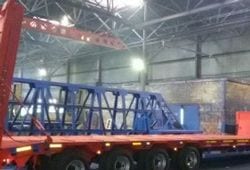
Waste paper for insulation
Insulation brand Ecofiber
Old scrap paper used for industrial house insulation. Thanks to the injection method, this can be done faster than with traditional thermal insulation materials, as well as filling hard-to-reach places and complex shapes more accurately. This building material is made from recycled newsprint that has been flaked and impregnated with pulp. Impregnations prevent the growth of microorganisms. They also protect the wood elements of the building that come into contact with the insulation from fungal growth. The insulation layer "breathes". When wet with proper airflow, excess moisture is removed very quickly; due to the large evaporation surface. Such insulation does not need to be protected with foil In combination with excellent gas permeability, this allows a much more favorable microclimate to be created inside than in rooms surrounded by a vapor barrier, which is required using glass wool or mineral wool.
The cellulose layer impregnated with impregnation does not burn and does not melt. It carbonizes only at a rate of 5-15 cm of layer thickness per hour. It does not emit any toxic substances. The temperature inside the coal is 90-95 ° C, which means that it will not ignite the external wooden structure. Of course, if fire is splattered on a structure, there is little that can be done. Cellulose fiber insulation is very light by mass, and the air inside occupies 70-90% of the volume. The apparent density (i.e. the weight of a particular unit of volume) depends on the intended use. At the lightest, used for thermal insulation of flat roofs or attics, it is 32 kg / m3. For the roof slopes, a slightly heavier material is used: 45 kg/m3. The heaviest, 60-65 kg/m3, is used to fill voids in so-called sandwich walls.
It is troublesome to store and transport such building material, because it takes up a lot of space. Therefore, when planting in bags (weight after loading 15 kg), it is compacted to 100-150 kg/m.3. Thermal insulation Thermal insulation made of cellulose fibers is similar to mineral and glass wool and polystyrene. It also has a high ability to dampen sounds.
The main method of insulation this charging material should inflate it dry. In this way, even very low places can be reached. If it is not possible to get from the inside, appropriate holes are made in the roof or drain wall, through which the heat-insulating material is blown, and then sewn up. On sloped or horizontal surfaces, the insulation can be wetted with water, usually with the addition of a spray adhesive. This is a technique similar to that used in the so-called Japanese plaster. Wet cellulose fibers are also introduced into the gaps of the outer sandwich walls, but foaming agents are added to the water. With all these methods, a dense insulating layer is formed. Doesn't it detect discontinuities even with very complex arrangements of perturbing elements, such as in a flat roof? poles, ventilation ducts or sewer pipes. There are also no thermal bridges caused by fastening boards with metal fasteners. For this reason, backfill insulation can be up to 30% more effective than insulation made from panels with the same insulation.

